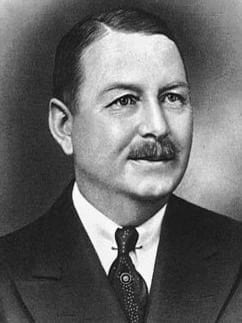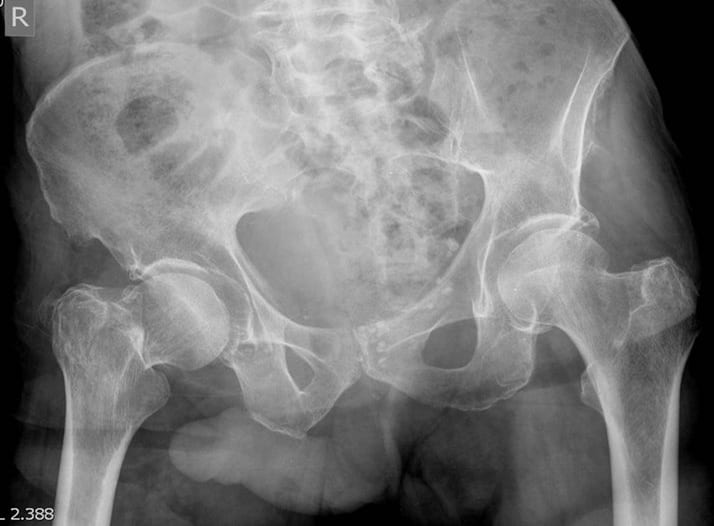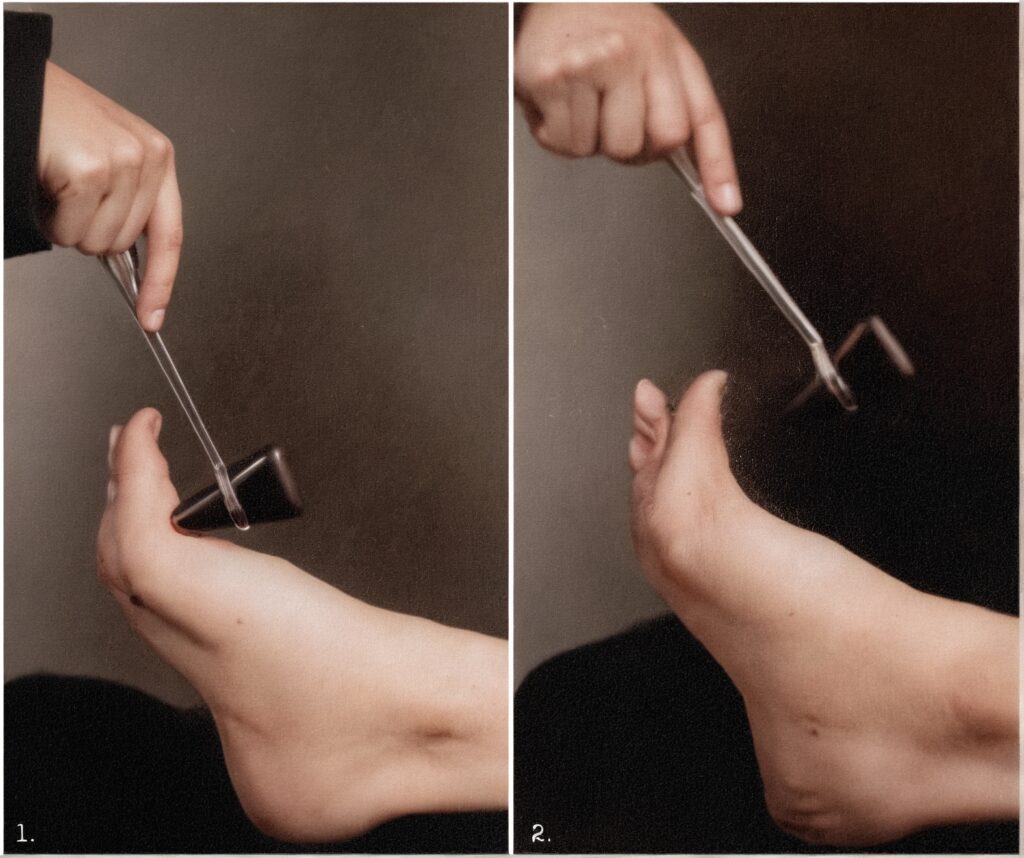Tom Throckmorton

Thomas Bentley Throckmorton (1885-1961) was an American neurologist
American neurologist, educator, and medical statesman best remembered for his diagnostic acumen, dedication to ethical medicine, and eponymous signs in neurology and radiology. Throckmorton combined a lifelong commitment to patient care with influential roles in organized medicine and postgraduate education.
Born January 20, 1885 in Derby, Iowa, into a prominent medical family, Throckmorton received his BSc from Simpson College in 1907 and his MD from Jefferson Medical College in 1909, graduating with the Dercum Gold Medal in Neurology. He trained in Philadelphia at institutions including the Orthopedic Hospital, Infirmary for Nervous Diseases, and Cherokee State Hospital.
In 1912, he established his practice in Des Moines and began teaching neurology at Drake Medical College. Over the next five decades, Throckmorton held numerous leadership positions: Secretary of the Iowa State Medical Society (1916–1930), Governor of the Iowa Chapter of the American College of Physicians (1920–1928), and Secretary of the Interstate Postgraduate Medical Association of North America (1932–1948). He was President of the Polk County Medical Society (1952) and Chair of the Neurological Section of the American Medical Association.
Throckmorton is eponymously linked to the Throckmorton sign (or John Thomas sign) in radiology and the Throckmorton reflex (1911), a variation of the Babinski reflex. He also described a simple method to assess motor paralysis of the lower limbs.
A compassionate physician, Throckmorton was known for never refusing care to patients unable to pay. He lived modestly, dedicated untold hours to organized medicine, and practiced according to deeply held Christian values. Beyond medicine, he was Grand Master of the Iowa Masons (1936) and received the 33rd degree in 1945.
Dr. Throckmorton died on July 4, 1961, leaving a legacy of service, scholarship, and humanism in American neurology.
Biographical Timeline
- 1885 – Born January 20 in Derby, Lucas County, Iowa, to Dr. Thomas Morford and Mary Ann (Bentley) Throckmorton.
- 1907 – Bachelor of Science (BS), Simpson College
- 1908 – Entered Jefferson Medical College, Philadelphia; mentored by Francis Xavier Dercum (1856–1931).
- 1909 – Graduated MD, Jefferson Medical College; awarded Dercum Gold Medal in Neurology.
- 1909-1911 Worked at the Maplewood Sanatorium (house physician); Philadelphia Orthopedic Hospital (resident physician); Infirmary for Nervous Diseases in Philadelphia (resident physician); and the Cherokee State Hospital for the Insane (assistant physician)
- 1911 – Described the Throckmorton reflex, a Babinski variant.
- 1912-1913 Lecturer in neurology, Drake Medical College
- 1916-1930 Secretary, Iowa State Medical Society
- 1920-1928 Governor of the Iowa Chapter of the American College of Physicians; Secretary and Trustee of the Interstate Postgraduate Medical Association of North America
- 1932 – Secretary, Interstate Postgraduate Medical Association of North America.
- 1936 – Grand Master of Masons in Iowa
- 1945 – Received honorary 33rd degree in Masonry.
- 1952 – President of the Polk County Medical Society.
- 1961 – Died July 4 in Des Moines, Iowa, aged 76.
Medical Eponyms
Throckmorton sign (John Thomas sign)
An informal radiologic observation seen on pelvic X-rays in males, where the position of the penis or penile shadow is noted to deviate toward the side of pathology (e.g., fracture, inflammation, or other abnormality). While often mentioned with humour, it has occasionally been used as a clinical cue in trauma evaluation. Despite its lack of diagnostic rigour, the term persists in radiological vernacular.

This sign can only be found in males – a patient has a positive Throckmorton sign if his penis points towards the side of pathology on a radiograph of the pelvis.
Throckmorton reflex (1911)
A lesser-known neurological sign, the Throckmorton reflex is a variation of the Babinski response. It is elicited by percussion over the metatarsophalangeal region on the dorsum of the foot, causing an extensor response in cases of upper motor neuron lesions. Though rarely used today, it reflects early 20th-century efforts to refine clinical neurologic examination.
The extensor plantar reflex, to which Babinski first called attention in 1898, and which bears his name, is considered by neurologists as being the most important reflex at their command by which to differentiate between functional and organic nerve lesions.
Babinski has shown that normally when the sole of the foot is stimulated by drawing some foreign object across its surface, plantar flexion of the toes follows; whereas, in organic diseases of the nervous system, particularly in spinal cord diseases accompanied by spastic symptoms, instead of a plantar flexion of the toes, an extension of the digits occurs which is most noticeable in the great toe and which acts more slowly than does the normal flexion.
I found that the extensor toe reflex could also be obtained in a manner different from any of the above mentioned ways. In every case in which the Babinski sign was present percussion at the base of the great toe would produce extension of this member, accompanied some times by extension of the remaining digits.
The skin overlying the upper surface of the first metatarsophalangeal articulation is struck with the pointed end of a percussion hammer just to the inner side of the tendon of the extensor longus hallucis muscle…to produce extension of the toe…it is always considered pathologic except in infants, in whom the pyramidal tracts have not been developed, and in those cases of spinomuscular lesion in which the plantar flexor muscles alone are involved
Throckmorton 1911

Major Publications
- Throckmorton TB. A new method for eliciting the extensor toe reflex. JAMA. 1911; 26(18): 1311-1312. [Throckmorton reflex]
- Throckmorton TB. The role of extensor toe reflex in neurological diagnosis. New York Medical Journal, 1911, 94: 786-787. [Throckmorton reflex]
- Throckmorton TB. A simple method for demonstrating motor paralysis of the lower extremities with special reference to Hoover’s sign. JAMA. 1923;80(15):1058-1060
- Throckmorton TB. The history of medicine in Lucas County. 1934
- Throckmorton TB. Francis X. Dercum: Physician, teacher and philosopher. The Journal of Nervous and Mental Disease1942; 96(5): 529-541.
- Throckmorton TB. Medicine then and now. Journal of the Iowa State Medical Society 1961; 51(2): 109-118
References
Biography
- Dr Tom Bentley Throckmorton. Journal of the Iowa State Medical Society. 1933; 23(10): 591
- Glomset DA. Dr Tom Bentley Throckmorton. Journal of the Iowa State Medical Society 1961; 51(10): 671
- History of Lucas County, Iowa. Walsworth Publishing Company, Inc. 1978; 300
- Bibliography. Throckmorton, Tom Bentley. WorldCat Identities
Eponymous signs
- Foley R. Throckmorton sign (pelvis). Radiopaedia
- Cadogan M. Throckmorton sign. Eponym A Day, Instagram
Eponym
the person behind the name
BA MA (Oxon) MBChB (Edin) FACEM FFSEM. Emergency physician, Sir Charles Gairdner Hospital. Passion for rugby; medical history; medical education; and asynchronous learning #FOAMed evangelist. Co-founder and CTO of Life in the Fast lane | On Call: Principles and Protocol 4e| Eponyms | Books |
